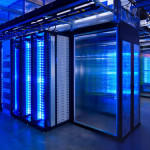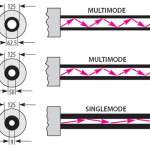Mode Field Diameter (MFD) is a critical parameter in the deployment of Single-Mode Fiber (SMF) within hyperscale and AI-focused data centers. As explained by Alan Keizer, Senior Technical Advisor for AFL, MFD significantly influences fiber selection, installation practices, and maintenance procedures, thereby optimizing network reliability, efficiency, and scalability.
What is MFD?
MFD defines the effective diameter over which optical power is distributed in single-mode fiber. Unlike the core diameter, which strictly measures the physical dimensions of the fiber’s core, MFD encompasses a broader area, extending somewhat into the cladding region. This distinction is crucial because it affects how light signals propagate through the fiber.
MFD Mismatch and Its Implications
Variations in MFD arise from design differences across fiber types and manufacturers, and even among fibers of the same type and manufacturer within the tolerance ranges specified by standards. When fibers with differing MFDs are spliced or connected, several optical effects can occur. One significant effect is insertion loss (IL), which increases with greater MFD discrepancies. These losses, though small within standards-compliant MFD ranges, can escalate when MFDs vary significantly.
Moreover, differences in MFD can affect Optical Time Domain Reflectometer (OTDR) measurements. OTDR relies on backscatter characteristics, which can vary with MFD, leading to apparent increased loss or gain at connection points. These artifacts, however, do not impact the actual optical power level at the receiver.
Standards Governing MFD Specifications
To ensure interoperability and consistent performance, ITU-T industry standards define acceptable MFD ranges. For instance, ITU-T G.652 standard single-mode fibers typically have an MFD range of 8.6 to 9.5 μm with a tolerance of ±0.6 μm, while G.657A.1 bend-insensitive fibers have a nominal MFD range of 8.6 to 9.2 μm with a tighter tolerance of ±0.4 μm.Adherence to these standards is vital for integrating fibers from different manufacturers seamlessly.
MFD Considerations in Data Centers
In hyperscale and AI data centers, selecting fibers with appropriate MFD characteristics is paramount. Unlike telecommunications, where long fiber spans are common, data centers prioritize low bend sensitivity due to densely packed routing scenarios. Fibers with larger MFDs are more prone to bend-induced losses because the optical field extends further into the cladding. Therefore, choosing fibers with lower nominal MFDs and tighter production control can minimize bend sensitivity, ensuring consistent performance.
MFD’s Role in Optical Testing
OTDR testing, a standard method for characterizing fiber optic links, can be influenced by MFD differences. Understanding the MFD characteristics of fibers under test is crucial for accurate OTDR interpretation.
Technicians must differentiate between actual faults and artifacts caused by MFD mismatches to assess network health reliably.
For data center applications, using optical light source and power meter test methods is recommended to qualify fiber links accurately, as these methods provide a true measure of a link’s ability to deliver optical energy.


